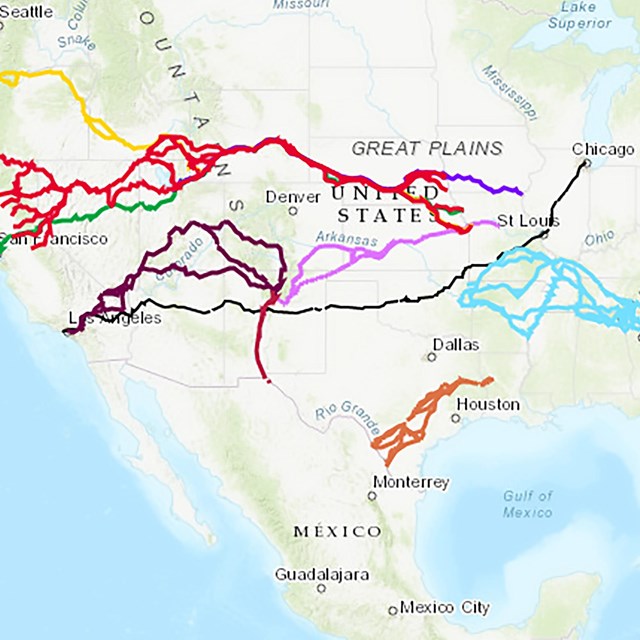Part of a series of articles titled Transportation During the Cherokee Removal 1837 - 1839.
Article
Introduction: Transportation During the Cherokee Removal 1837 - 1839
In 1835, a minority of Cherokee leaders, acting outside of the authority of the Cherokee government, signed the Treaty of New Echota. This treaty set the conditions for the Cherokee removal: In exchange for $5 million, the tribe would abandon their homes and lands in western North Carolina, northern Georgia and Alabama, and southeastern Tennessee and relocate to Indian Territory (present-day Oklahoma). The Cherokee were given until May 1838 to remove voluntarily. Most refused to recognize the Treaty of New Echota, and few left before the deadline. In May 1838, the U.S. Army and state militias forcibly gathered the thousands of remaining Cherokee and held them at one of three emigrating depots, two in Tennessee and one in Alabama. Poor conditions at the emigrating depots led to rapid outbreaks of disease, and many Cherokee perished before they were divided into detachments and began their journey west.
In total, approximately 17,000 Cherokee removed to Indian Territory from 1837–1839, with more than 15,000 of them removed by force in 1838–1839. During their removal, the Cherokee utilized all major modes of transportation available at the time to reach their destination. They sailed the rivers on steamboats, flatboats, and keelboats. A few detachments traveled on one of the earliest railroads in the United States for a leg of their journey. The majority, however, traveled on roads over rough terrain with wagons in tow to transport goods, the elderly, and the sick.
While the impact of removal was devastating, as thousands are estimated to have died, the Cherokee persevered and successfully rebuilt their communities while carrying on their cultural traditions. The removal of the Cherokee, commonly known as the Trail of Tears, largely completed the implementation of the Indian Removal Act of 1830, which mandated the removal of most American Indian tribes east of the Mississippi River to lands in the West. This series (Transportation during the Cherokee Removal 1837 - 1839) serves as a companion to the Trail of Tears National Historic Trail Official Map and Guide, providing an overview of the many methods of transportation used in the Cherokee removal.
This publication was made possible by the Cooperative Ecosystem Studies Unit (CESU) Task Agreement P18AC01316 with National Trails– National Park Service and the Center for Historic Preservation at Middle Tennessee State University.
Read the Full Report
Last updated: November 16, 2021


